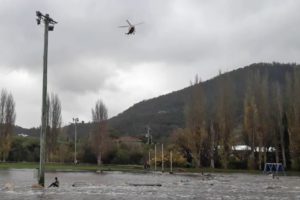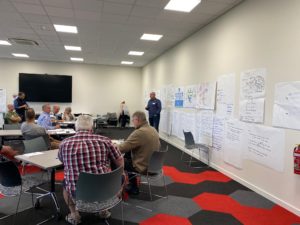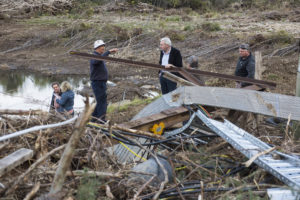Every community has capabilities, experience and local knowledge that it can contribute.
Relationship Building
Developing understanding involves putting time and effort into creating trust and building relationships across all phases of emergency management: before, during and after an event. It recognises that community engagement in the emergency management context is a long-term process and, to be most effective, must take place well before an event occurs and continue long after it is over.

People will get involved and stay engaged if their input is respected and valued. Every community has networks, structures and ways of working that are familiar and meaningful to its members. The formation of partnerships that connect with and reflect these characteristics is crucial to effective community engagement.
Engaging a community in how it can prepare for, respond to and recover from emergencies is more likely to result in decisions and outcomes the community is confident about and will act upon, and this in turn will support the work of emergency management organisations.
Partnering with the community to support existing networks and resources involves a two-way communication process where each participant can learn and benefit from the knowledge and experience of the other. To engage communities the following is suggested:
Fostering relationships with community leaders.
Every community has capabilities, experience and local knowledge that it can contribute.
Identifying and employing strategies that empower local action.
Building on existing social capital.
Shared Responsibility
In the emergency management sector, community engagement has often been peripheral to the core business of emergency management organisations. This means that embedding engagement within the culture and practice of emergency management organisations is a key challenge for the future. Such a change requires sustained resourcing, commitment and cross-sectoral partnerships, as well as new ways of measuring and evaluating success.
Engaging a community in how it can prepare for, respond to and recover from emergencies is more likely to result in decisions and outcomes the community is confident about and will act upon, and this in turn will support the work of emergency management organisations.
An Example of Shared Responsibility
When we are highlighting the importance of Shared responsibility in the community it is important to consider an example from researcher at the Centre of Disaster Studies, James Cook University who have collated a brief document , Know your Patch to Grow your Patch: Understanding Communities and Project Bushfire CRC. It contains a method for gaining information that can be used for identifying:
- A community profile
- People’s capacity to deal with and vulnerability to bushfire
- People’s perceptions of bushfire issues and expectations of service deliver
- Organisational needs at the local level for clarifying community members
- Ways of moving forward.

Community safety approach-Shared Resonsibility
People with emergency management responsibilities use a range of strategies to enhance public safety before, during and after an emergency event. As previously discussed, some of the strategies to promote a shared responsibility include community education, community engagement, community development, stakeholder partnership development, legislations and advocacy.
A fundamental goal of this relationship building is to build a sense of shared responsibility with the community and empower them to exercise choice and take responsibility, thereby reducing their reliance upon emergency services.
Examples of plans and community engagement are located on the Community Engagement page of this module in the highlight text box.

Risk management-A shared responsibility
It is believed that effective community engagement will encourage and support changes in individual and community attitudes and behaviours about risk, and in turn build disaster resilience and confidence in preparing communities in the event of an emergency.
It important for people in the Tasmanian community to develop the skills and knowledge to manage risks relevant to their own communities which include:
Building everybody’s risk awareness and risk reduction knowledge and skills through inclusive policies to suit specific needs and address individual and local community vulnerability, capacity and exposure to risk.
Incorporating disaster risk awareness and risk management knowledge into formal and non-formal education, professional development and other training.
Applying risk information to reducing disaster risks and preparedness.

It is believed that effective community engagement will encourage and support changes in individual and community attitudes and behaviours about risk, and in turn build disaster resilience and confidence in preparing communities in the event of an emergency For communities to thrive they need to learn and adjust to be resilient to disasters which is expanded on below:
Improves the ability of:
- Individuals
- Communities
- Businesses government & other organisations
- To survive, adapt and thrive in the face of disasters.
Helps reduce the negative impacts of disasters such as:
- Deaths, injury and illness
- Number of people affected
- Economic loss
- Damage to community assets.
Relevant Resources
These documents provide advice and support to other government agencies who have other responsibilities related to emergency planning focussing on developing resilient communities.
The National Strategy for Disaster Resilience (the Strategy) recognises that emergency management is a shared responsibility for all of society. It is important for those working in emergency management to understand the key role the community plays in contributing to its own safety, and to develop and strengthen the partnership between emergency management agencies and the community.
Tasmanian Disaster Resilience Strategy 2020-2025 outlines the importance of focussing on reducing disaster risk which can be more cost effective than spending on response and recovery. Disaster risk management can reduce response and recovery costs by 50 per cent. Resilient communities can recover better and often have fewer event related health issues.


